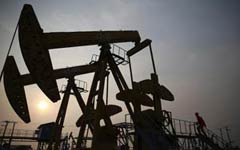The Chinese government has again proved its ability to maintain economic growth despite widespread pessimism. Yet the pickup in the second quarter has failed to erase market concerns about continued downward pressure in the year's second half.
Concerns continue to mount, and not only because, of the more than 20 provincial areas that have released their six-month GDP statistics, including powerhouses like Beijing, Shanghai and Guangdong, not one has met the growth target set at the beginning of the year.
 |
 |
It is also because investors tend to overreact to even the slightest policy change like a bird on a wire, indicating their uncertainty and lack of confidence in future policy direction. It seems the economy has fallen into a cyclical policy trap over the past few years.
The economic cycle repeats itself over the course of the four quarters, as growth goes up and down with the application of pro-growth stimulus and reform-minded economic policies. That is why sometimes a slowdown can be interpreted as good news, since it signals further loosening, while growth could indicate the end of stimulus measures.
However, truly good news for the market - the uprooting of deep-seated economic problems - has yet to arrive. Finding a way to make that happen, as well as minimize the cost of the process, should be a priority for policymakers as they convene at next week's economic symposium.
The Political Bureau of the Communist Party of China's Central Committee - a panel of about 25 top-ranking officials - will sit down for a closed-door meeting to review the first-half economy and map out strategies for the second.
Whether they will agree to more targeted stimulus moves to offset the high base number of last year's GDP growth is unknown. Also a question mark is the strength of their determination to take on reforms needed to repair the economy.
But it is dogmatic and bookish to forecast China's economy based on a simple calculation of a handful of economic indicators. Both policymakers and investors should bear in mind that the nation's vast territory and differentiated economic situations have enabled China to neutralize a crisis in one area with a boom in another.
That being the case, the market should be more tolerant of the fluctuations of economic indicators like GDP statistics. That would give local governments more latitude to restructure their industries and change their current gauge of economic growth into a more comprehensive scale.
Unless deep-seated structural problems can be weeded out, the truly good news of sustainable growth will never arrive in the world's second-largest economy.
